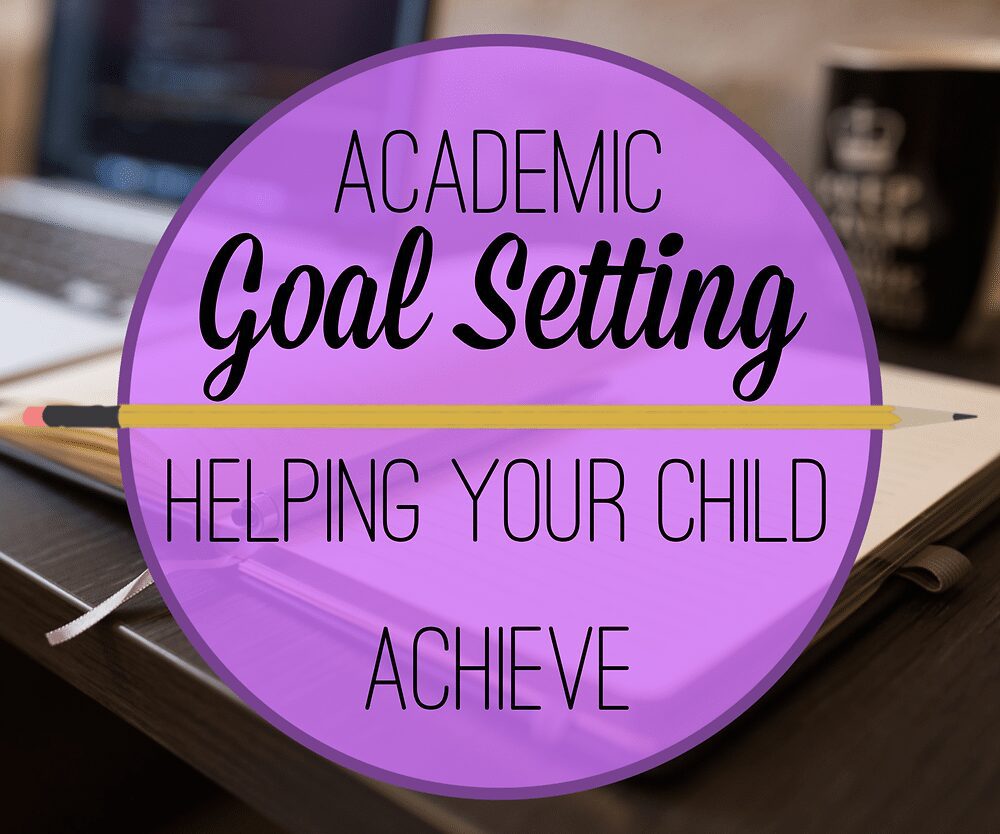หากคุณถามหน่วยงานท้องถิ่นหรือผู้นำบริษัทว่า STEM ย่อมาจากอะไร พวกเขาอาจอธิบายให้คุณได้ พวกเขาอาจบอกว่าเป็นเรื่องเกี่ยวกับวิทยาศาสตร์ เทคโนโลยี วิศวกรรมศาสตร์ และคณิตศาสตร์ จากนั้นพวกเขาอาจพูดคุยเกี่ยวกับอาชีพ STEM เช่น วิศวกรและโปรแกรมเมอร์คอมพิวเตอร์หารายได้มหาศาลและเป็นที่ต้องการสูง พวกเขาอาจพูดคุยถึงความต้องการศาสตราจารย์ด้านวิทยาศาสตร์เพิ่มเติมเพื่อสอนวิชา STEM
มันจะไม่ผิดพลาดทั้งหมด แต่ก็ไม่ได้แม่นยำทั้งหมดเช่นกัน
STEM เป็นมากกว่าคำย่อที่รวมหลักสูตรทั้งสี่หลักสูตรเข้าด้วยกัน เช่นเดียวกับที่ระบบโรงเรียนทราบ และ STEAM ก็เหมือนกัน (โดยนำศิลปะเข้ามาเป็นส่วนหนึ่งของ STEM) นั่นเป็นเพราะว่า STEM และ STEAM เป็นปรัชญาการสอนที่รวมเอาสาขาที่เกี่ยวข้องเข้าด้วยกันเป็นโปรแกรมเดียวที่เชื่อมโยงกันและครอบคลุมหลายสาขาวิชา โดยใช้แนวทางการสอนแบบสืบเสาะหาความรู้เพื่อให้ทักษะและข้อมูลที่จำเป็นแก่นักเรียนในการเติบโตในโลกแห่งความเป็นจริง ผู้ปกครองและผู้นำชุมชนส่วนใหญ่ไม่ทราบว่า STEM และ STEAM มีวิวัฒนาการเพียงใด ทั้งสองอย่างนี้เป็นวิธีการสอนแบบใหม่ที่ต้องใช้แนวทางใหม่ในด้านการศึกษาด้วย
การประเมิน นักเรียน STEAM สามารถประเมินได้ด้วยวิธีเดิมหรือไม่ โดยจะใช้ดินสอและกระดาษคำถามที่ครอบคลุมหัวข้อเดียวในแต่ละครั้ง หากเซสชัน STEAM ทั่วไปครอบคลุมหลายสาขาวิชาในคราวเดียว แน่นอนว่าไม่ ความยากลำบากอย่างหนึ่งในการประเมินนักเรียน STEAM ก็คือเรื่องนี้ มาพูดถึงประเด็นหลัก 2021 ประการในการประเมิน STEAM กัน จากนั้นจะทำความเข้าใจแนวทางแก้ไขและแนวทางปฏิบัติที่ดีที่สุดในการประเมิน STEAM ในปี XNUMX ได้อย่างไร
1. การประเมินแบบไม่เชื่อมโยงกัน
ความท้าทายประการแรกได้ถูกกล่าวถึงไปแล้ว STEM และ STEAM นั้นไม่ใช่แค่เพียงหลักสูตร 4-5 หลักสูตรเท่านั้น แต่ยังมีความแตกต่างกันโดยพื้นฐานจากวิธีการสอนแบบดั้งเดิม ในอดีต คณิตศาสตร์นั้นสอนโดยครูสอนคณิตศาสตร์เป็นหลักหรือจำกัดอยู่แค่ส่วนประกอบคณิตศาสตร์ของหลักสูตรเท่านั้น แต่ในห้องเรียนที่ขับเคลื่อนด้วย STEAM สาขาวิชาต่างๆ มากมายนั้นผสมผสานกันอย่างกลมกลืนเพื่อเพิ่มการเรียนรู้ของนักเรียนและจำลองวิธีการนำข้อมูลไปใช้ในโลกแห่งความเป็นจริง นี่คือสิ่งที่เราหมายถึงเมื่อเราพูดว่า STEAM เป็นสหสาขาวิชาและเชื่อมโยงกัน ถึงแม้ว่าบทเรียนต่างๆ จะถูกสอนโดยใช้สาขาวิชาต่างๆ แต่การประเมินมักจะยังคงเน้นที่วิชาเดียวในแต่ละครั้ง
สิ่งนี้เปรียบเสมือนการจ้างคนมาสร้างบ้านแล้วให้คะแนนพวกเขาในแต่ละสาขาการสร้างบ้าน ได้แก่ ฐานราก โครงสร้าง ระบบประปา ไฟฟ้า และหลังคา แต่ไม่เคยให้คะแนนว่าบ้านนั้นดีโดยรวมหรือไม่ แม้ว่าระบบประปา ระบบหลังคา และสาขาย่อยอื่นๆ ทั้งหมดจะทำได้อย่างถูกต้อง แต่หากไม่ได้ประเมินโครงการโดยรวม ไม่ระบุว่าเป็นบ้านที่ดีหรือไม่ การประเมินอาจมองข้ามภาพรวมไป แน่นอนว่าการศึกษาแตกต่างจากการสร้างบ้าน แต่สิ่งสำคัญคือต้องตระหนักว่า STEAM และ STEM นั้นไม่ได้แตกต่างกันอย่างที่เห็น การประเมินโดยใช้ปากกาและกระดาษในหัวข้อเดียวจะมองข้ามความซับซ้อนในโลกแห่งความเป็นจริงของการสอน STEAM ของพวกเขา หากนักเรียนได้รับการสอนผ่านโครงการที่เชื่อมโยงกันซึ่งผสมผสานสาขาวิชาต่างๆ เข้าด้วยกัน การประเมิน STEAM ควรพิจารณาให้นักเรียนเป็นผู้มีส่วนร่วมในกระบวนการนำข้อมูลไปใช้ แทนที่จะมองว่าพวกเขาเป็นผู้บริโภคความรู้แบบเฉื่อยๆ
2. เนื้อหาที่ไม่เชื่อมต่อ
ปัญหาสำคัญอีกประการหนึ่งของการสอบ STEM คือเนื้อหา การศึกษาด้าน STEAM นั้นไม่ได้มีลักษณะสหสาขาวิชาเกิดขึ้นเอง การเพิ่มวิศวกรรมศาสตร์เข้าไปในการบรรยายวิทยาศาสตร์ไม่ได้ทำให้การสอนกลายเป็นบทเรียน STEAM ในทันที และไม่ได้รับประกันผลการเรียนรู้ที่เหนือกว่าด้วย หากต้องการสอนในลักษณะ STEAM ครูจะต้องผลิตหรือค้นหาเนื้อหาสหสาขาวิชาและให้แน่ใจว่าเนื้อหานั้นได้รับการปรับแต่งให้เหมาะกับความต้องการของนักเรียน ไม่ว่าการประเมินผลของคุณจะดีเพียงใด การประเมินผลก็จะขาดการเชื่อมโยงกันเสมอ เนื่องจากบทเรียนไม่เกี่ยวข้องกัน ไม่มีเนื้อหาที่ผสมผสานสาขาวิชาต่างๆ เข้าด้วยกัน และอาจสอนด้วยวิธีที่เชื่อมโยงกัน ความจงใจในการเชื่อมโยงสาขาวิชาต่างๆ เข้าด้วยกันนั้นส่งผลให้เกิดผลการเรียนรู้ที่คล้ายกับชีวิตนอกห้องเรียน การประเมินผล STEAM จะล้มเหลวหากหลักสูตรไม่ผสมผสานสาขาวิชาต่างๆ เข้าด้วยกันอย่างสม่ำเสมอ และไม่ได้ให้การศึกษาในลักษณะสหสาขาวิชา บทเรียน STEAM ควรมาก่อน
3. การดำเนินการที่ไม่สอดคล้องกัน
ปัญหาในการนำไปปฏิบัติเป็นปัญหาที่สาม ในขณะที่โปรแกรม STEM จำนวนมากพยายามสร้างการสอนที่เชื่อมโยงกันซึ่งครอบคลุมสาขาวิชาต่างๆ การนำไปปฏิบัติอาจไม่เท่าเทียมกัน บางครั้งบทเรียนก็ทำหน้าที่นี้ได้อย่างยอดเยี่ยมและจะได้รับประโยชน์จากการประเมิน STEAM บทเรียนอาจคล้ายคลึงกับเนื้อหาที่ไม่ต่อเนื่องที่เราเพิ่งตรวจสอบไป สิ่งนี้เป็นจริงทั้งในหลักสูตร STEM ของครูคนเดียวหรือโรงเรียน รวมถึงในเขต รัฐ และประเทศโดยรวม เนื่องจากไม่มีมาตรฐานที่แน่นอนสำหรับการศึกษา STEM โดยทั่วไปแล้วจึงขึ้นอยู่กับโรงเรียนหรือครูที่จะตัดสินใจว่าจะสอนอย่างไร นอกเหนือจากตารางงานที่ยุ่งอยู่แล้ว ผู้สอนยังต้องสร้างหลักสูตรแบบบูรณาการและเกณฑ์การประเมินอีกด้วย
ยิ่งไปกว่านั้น โปรแกรม STEM จำนวนมากไม่ได้ลงรายละเอียดอย่างละเอียดว่าโปรแกรมจะบูรณาการและเชื่อมโยงสาขาวิชาต่างๆ เข้าด้วยกันอย่างไร ซึ่งทำให้สิ่งต่างๆ ซับซ้อนขึ้น เนื่องจากครูไม่สามารถระบุได้ว่าควรประเมินสิ่งใดในแต่ละบทเรียน ปัญหาในการดำเนินการเหล่านี้ทำให้การประเมิน STEAM ยากขึ้น ไม่ว่าจะเป็นเพราะการดำเนินการที่ไม่สอดคล้องกัน เอกสารประกอบที่ไม่ดี หรือการเชื่อมโยงบทเรียนกับการประเมินล้มเหลว
4. ไม่มีพื้นที่สำหรับการปรับแต่ง
ปัญหาอีกประการหนึ่งของการสอบแบบใช้ปากกาและกระดาษแบบดั้งเดิมคือความเข้มงวดของข้อสอบ การประเมินแบบดั้งเดิมมักออกแบบมาเพื่อประเมินรายการเฉพาะด้วยวิธีเฉพาะ แต่ก็ไม่ใช่เสมอไป ส่งผลให้เกิดความยากลำบาก เช่น การสอนเพื่อเตรียมสอบหรือการเน้นที่ความจำมากกว่าการคิดวิเคราะห์ ซึ่งเป็นปัญหาที่ทราบกันดีและอาจารย์หลายๆ คนก็แก้ไขปัญหาเหล่านี้ได้ดี เมื่อพูดถึงการสอบ STEM ยังมีปัจจัยอีกประการที่ต้องพิจารณา นั่นคือ การทำให้เป็นรายบุคคล
STEM และ STEAM เหมาะแก่การฝึกอบรมแบบเฉพาะบุคคลมากกว่าแนวทางการสอนอื่นๆ เนื่องจาก STEAM เป็นแบบวนซ้ำ องค์รวม และเน้นการแก้ปัญหา ครูผู้สอนจึงสามารถปรับเปลี่ยนวงจรการเรียนรู้แบบต่อเนื่องเพื่อตอบสนองความต้องการของนักเรียนได้ ซึ่งใช้ได้กับทั้งบทเรียนและการประเมินผล เนื่องจากหากการสอนเป็นแบบรายบุคคลแต่การประเมินผลไม่เป็นแบบนั้น การประเมินผลจะแยกออกจากสิ่งที่สอนและเรียนรู้ ใน STEAM คุณค่าของการปรับแต่งให้เหมาะกับแต่ละคนนั้นไม่สามารถพูดเกินจริงได้ โรงเรียนเสี่ยงต่อการกดดันให้เด็กนักเรียนปฏิบัติตามค่าเฉลี่ยของชั้นเรียนแทนที่จะประเมินจุดแข็งและจุดอ่อนอย่างแท้จริงหากไม่มีการปรับแต่งให้เหมาะกับแต่ละคน นักเรียนจะเสียสมาธิหากการประเมินผลไม่ช่วยให้พวกเขาเรียนรู้ในแบบฉบับของตนเองได้ จะเป็นเรื่องน่าเศร้าหากไม่ใช้ประโยชน์จากโอกาสอันยอดเยี่ยมของกรอบงาน STEAM สำหรับการปรับแต่งให้เหมาะกับแต่ละคนในลักษณะนี้
5. เวลาและทรัพยากรไม่เพียงพอ
อุปสรรคสำคัญประการสุดท้ายคือสิ่งที่ทุกคนที่เกี่ยวข้องกับการศึกษาต่างคุ้นเคย กล่าวอย่างง่ายๆ ก็คือ ครูมีงานมากมายให้ทำ “ครูไม่ได้มีแค่ภาระงานเต็มมือ แต่ยังมีงานอื่นๆ อีกมากมาย” นักการศึกษาจาก SAM Labs เคยกล่าวไว้ นักการศึกษามักไม่มีเวลาหรือทรัพยากรอื่นๆ เพียงพอ ไม่ว่าจะเป็นเวลาหรือทรัพยากรอื่นๆ เมื่อต้องประเมินผล อาจเป็นเรื่องยากโดยเฉพาะอย่างยิ่ง การประเมิน STEM ที่ประสบความสำเร็จอาจใช้เวลานานเนื่องจากกระบวนการที่เน้นการสอบถาม โดยเฉพาะอย่างยิ่งเมื่อคำนึงถึงการปรับแต่งส่วนบุคคล จะเกิดอะไรขึ้นหากนักการศึกษาเป็นผู้สร้างบทเรียนและการประเมิน? เป็นเรื่องน่ากลัวที่จะคิดถึงเรื่องนี้
นี่เป็นหัวข้อที่ท้าทายในการเอาชนะ เนื่องจากอาจเป็นความยากลำบากที่ยากที่สุดในการประเมินเด็ก ๆ ที่ใช้ STEM และ STEAM โชคดีที่มีเทคนิคในการควบคุมหรือบรรเทาปัญหาเหล่านี้ทั้งหมด รวมถึงประเมินบทเรียน STEAM อย่างชาญฉลาดเพื่อประโยชน์ของเด็ก ๆ ของเรา








